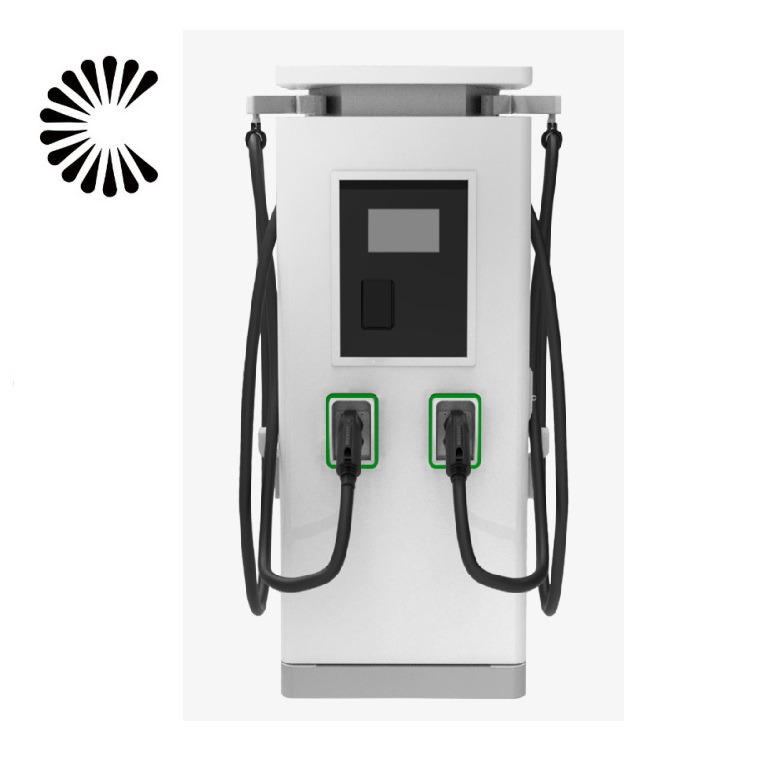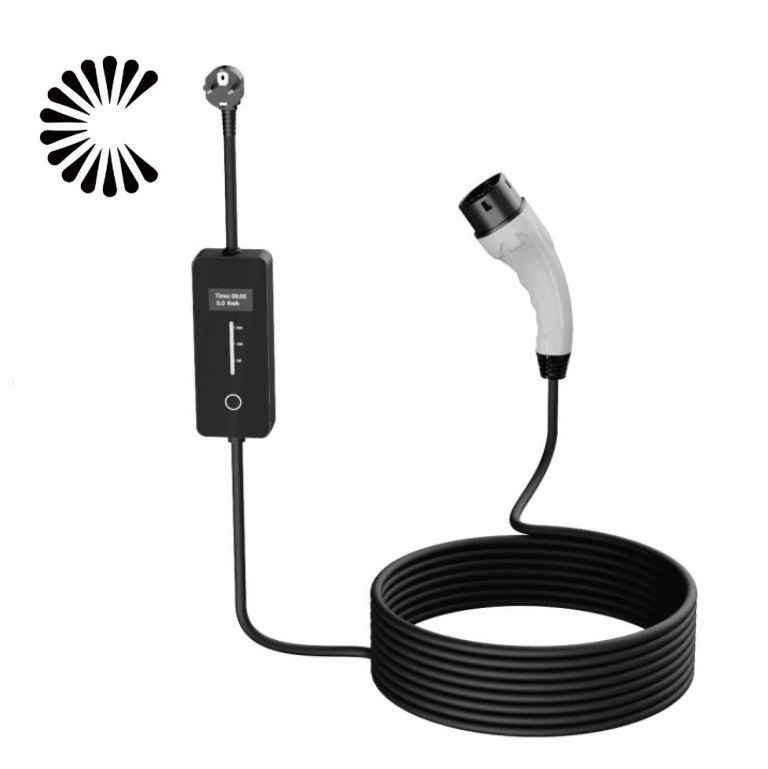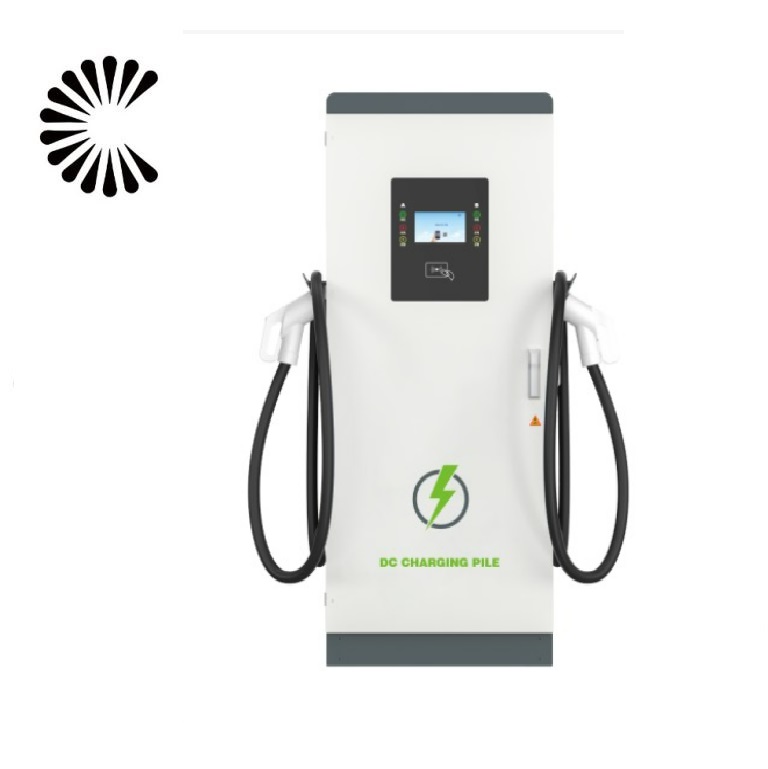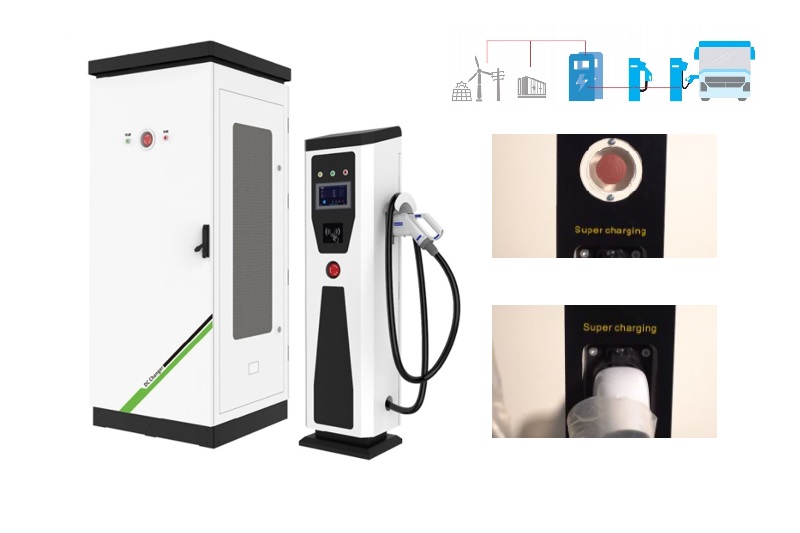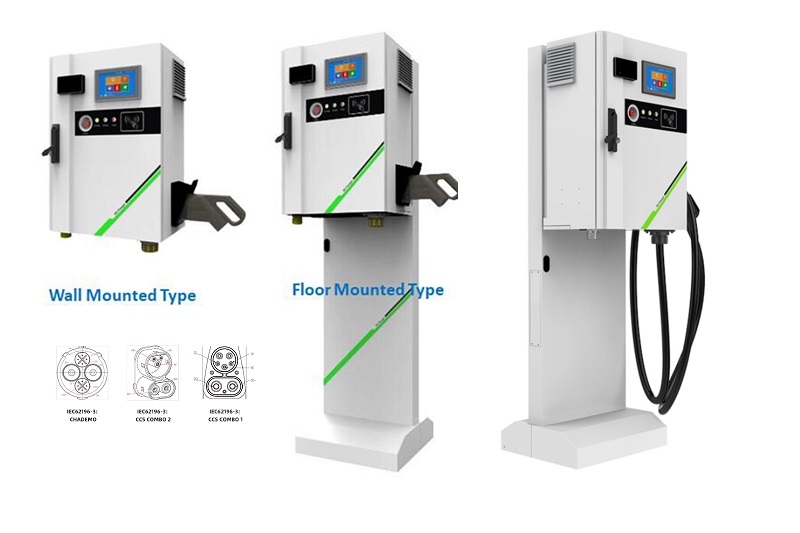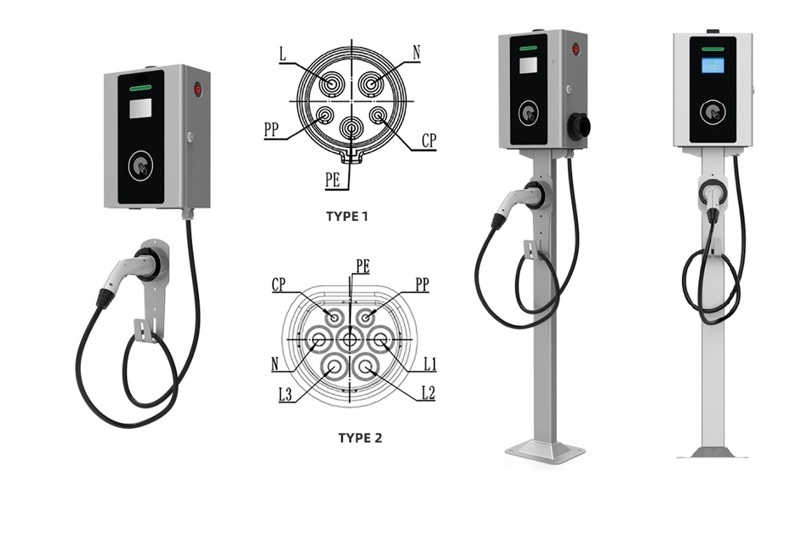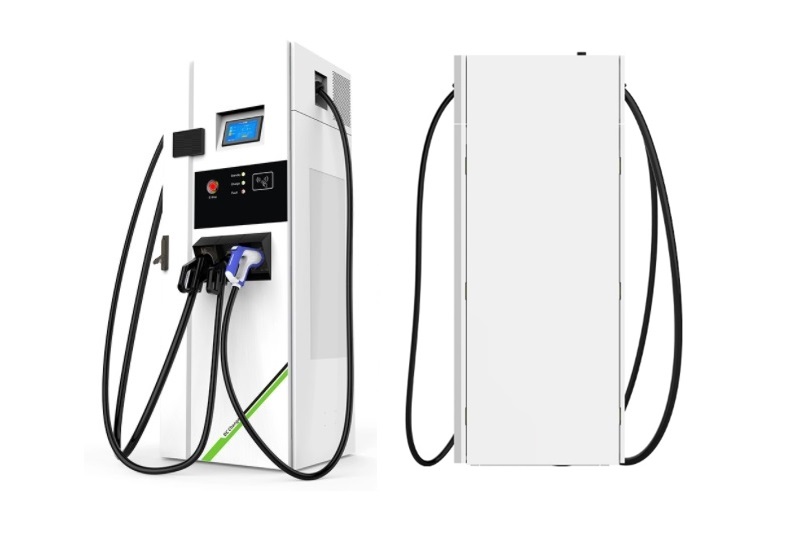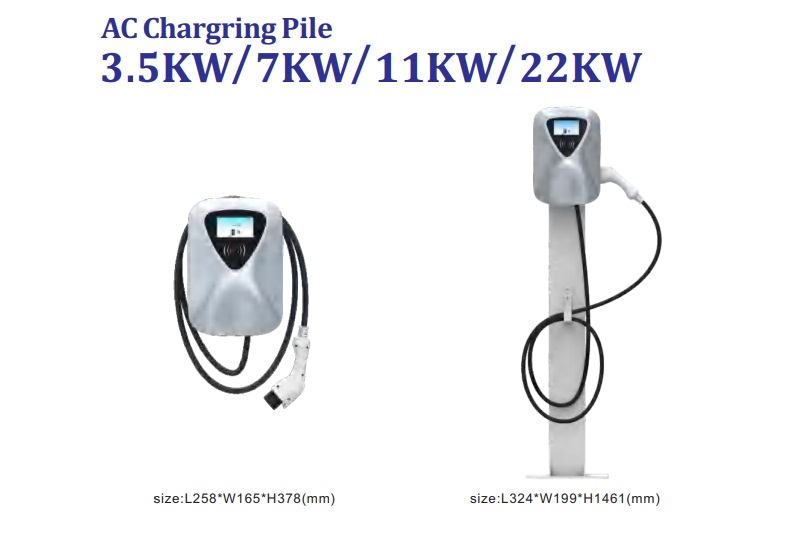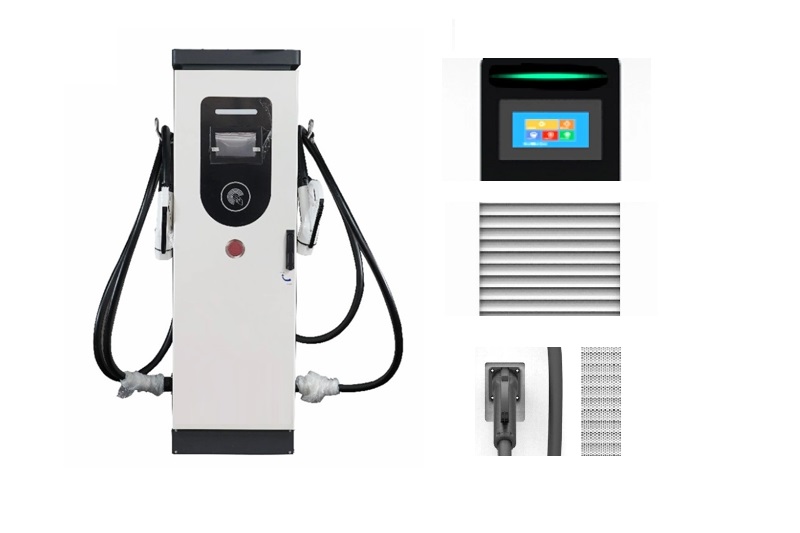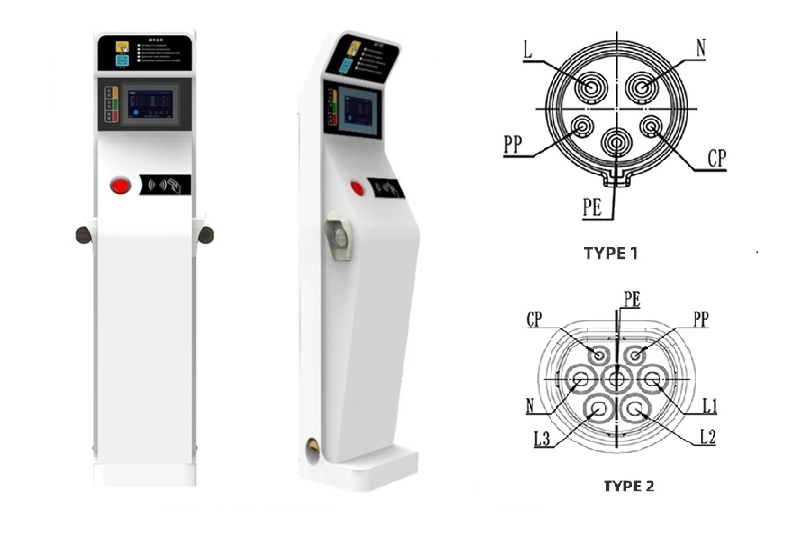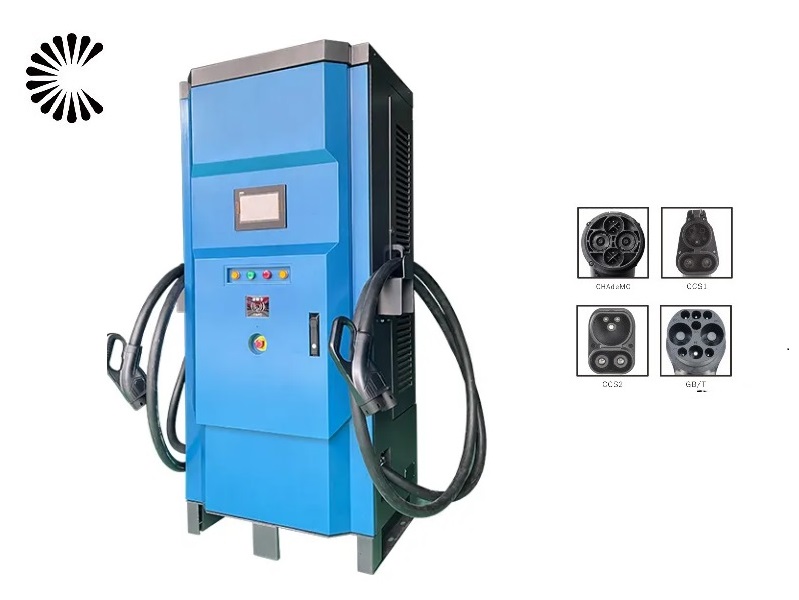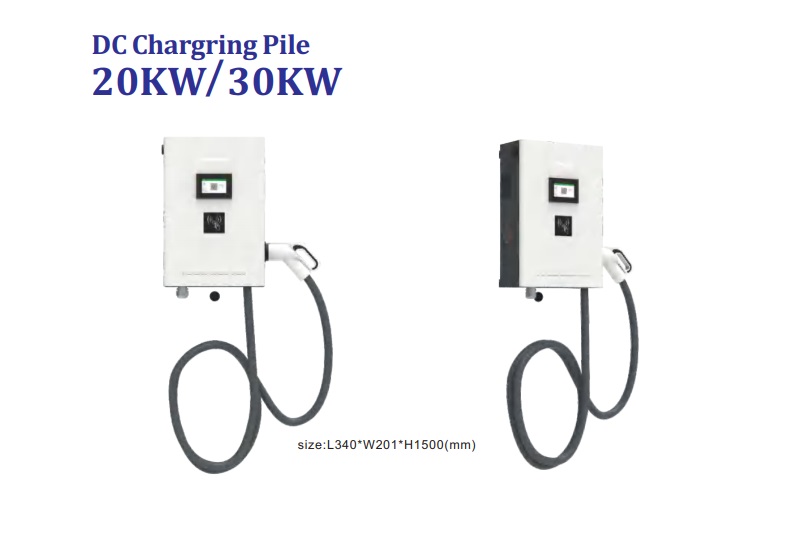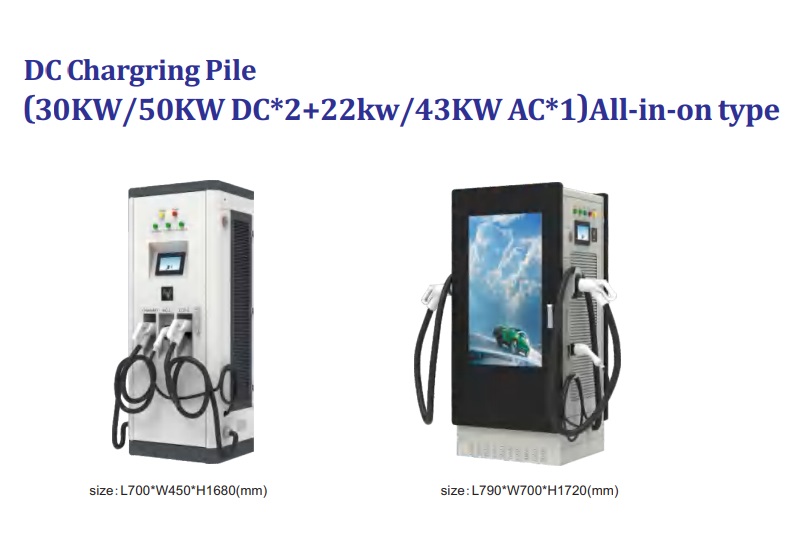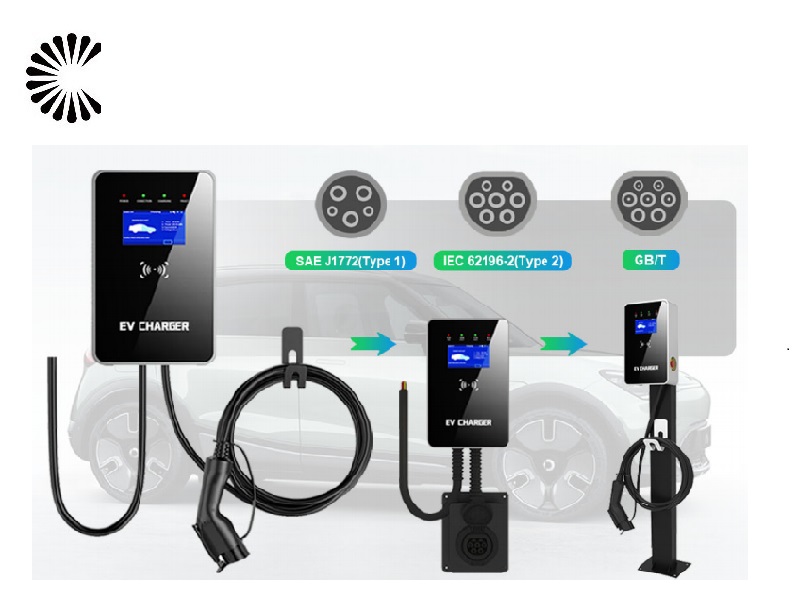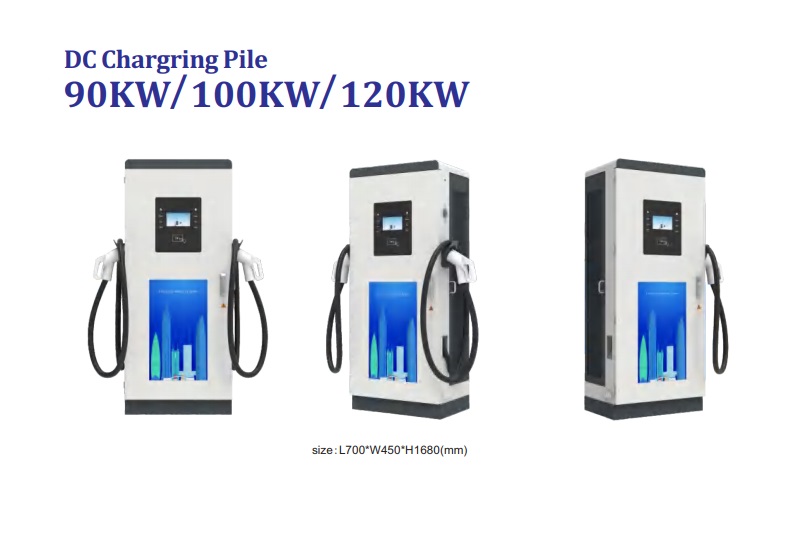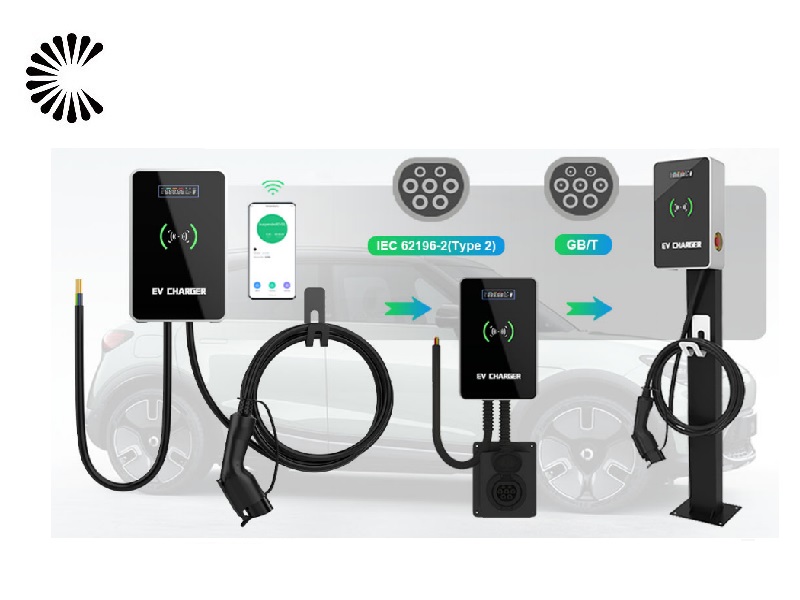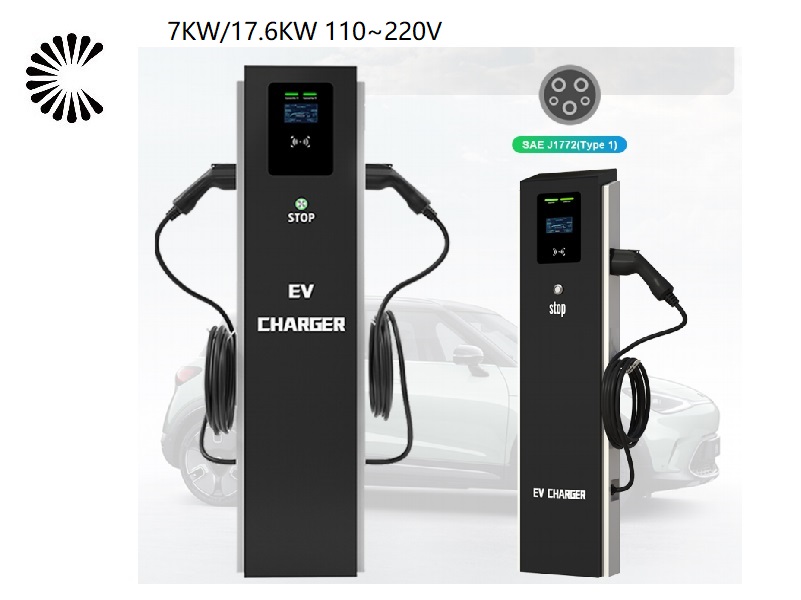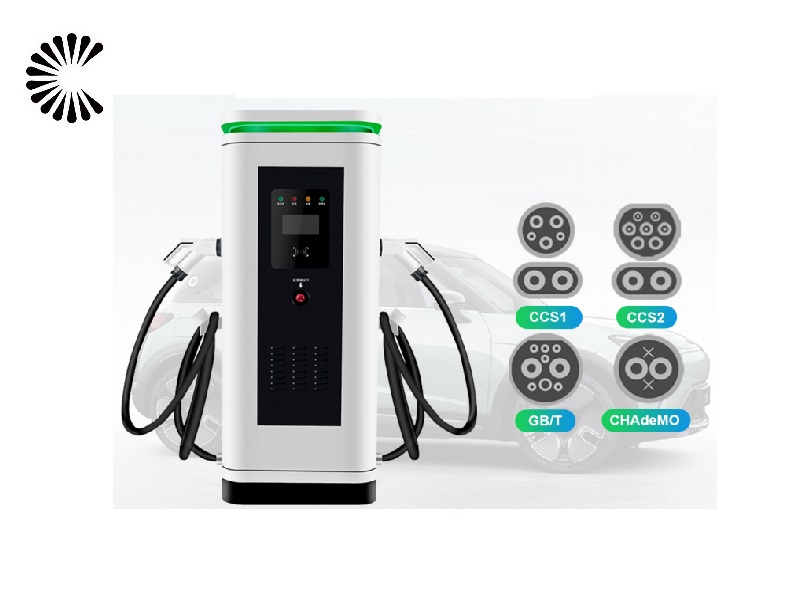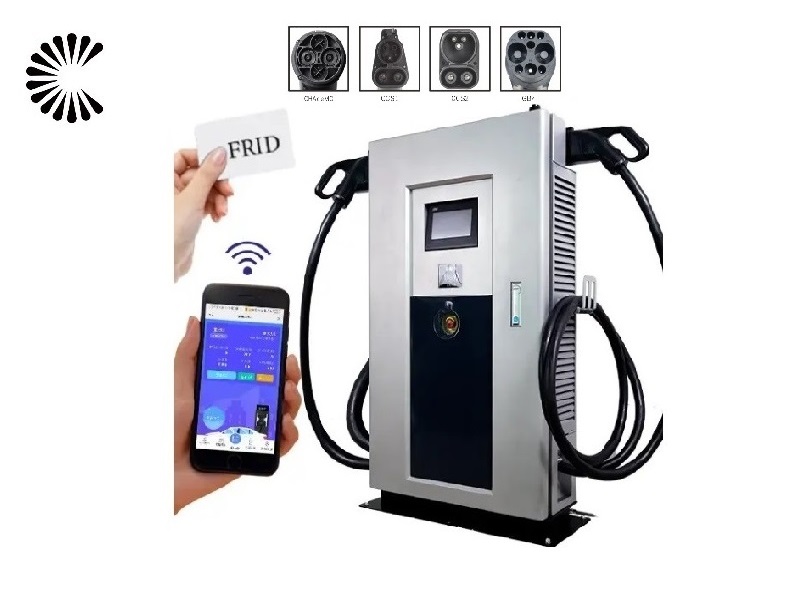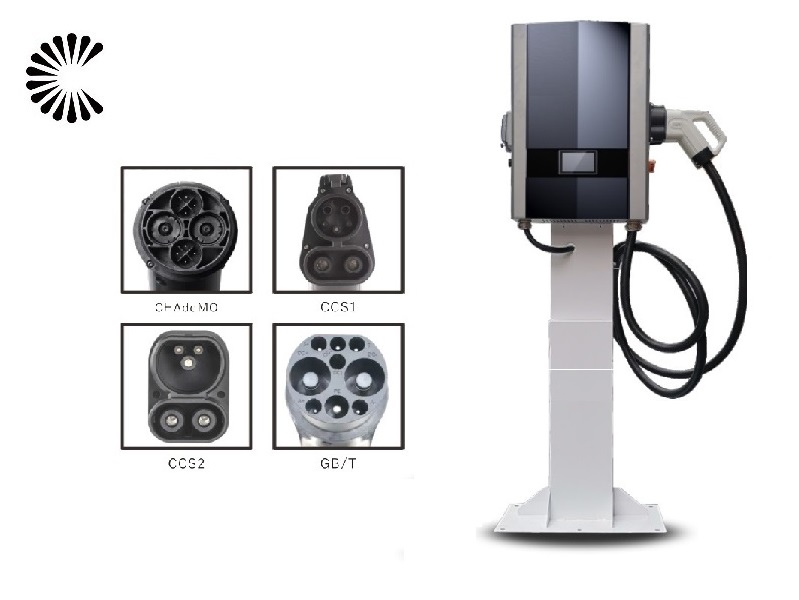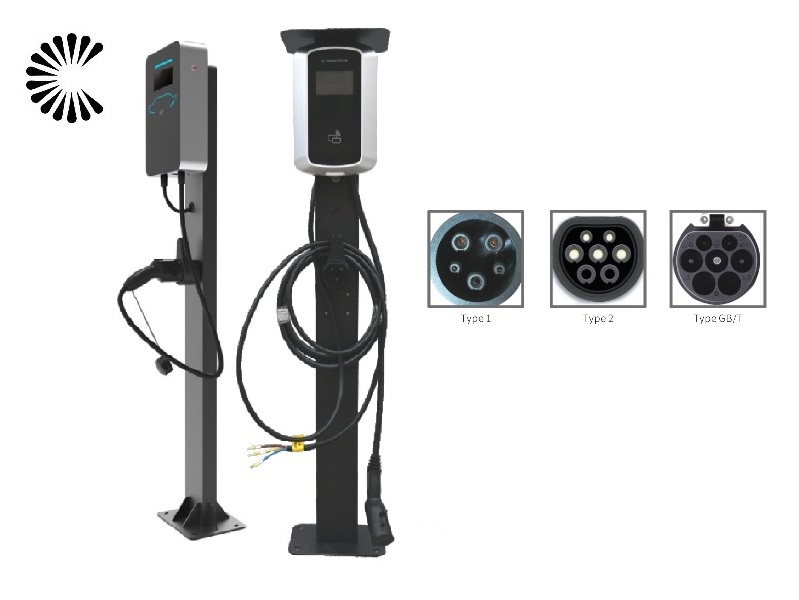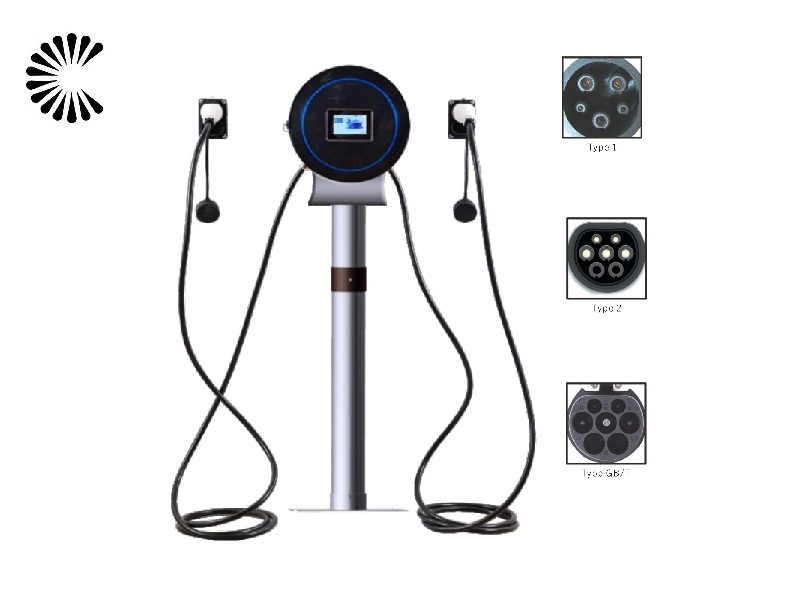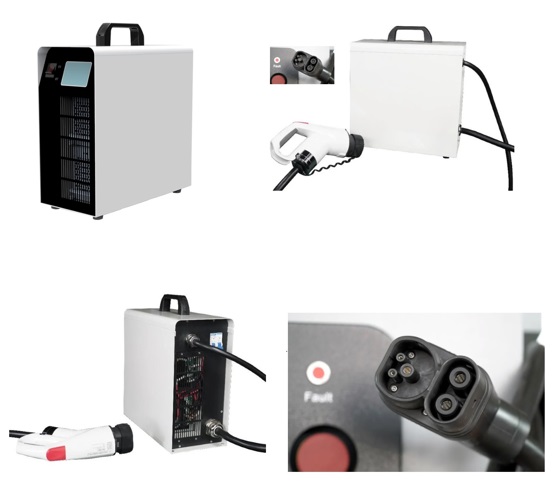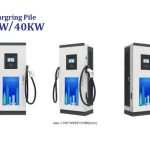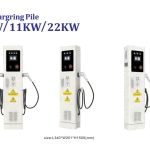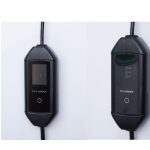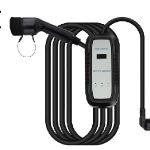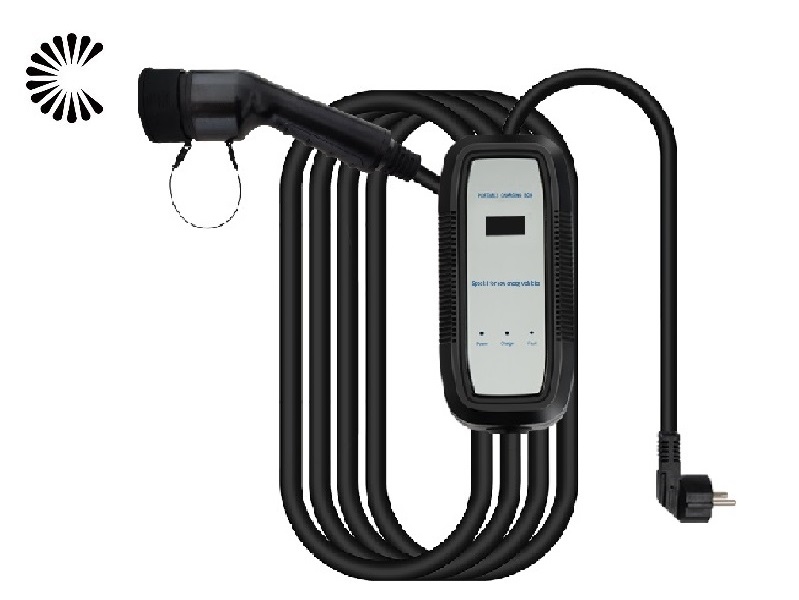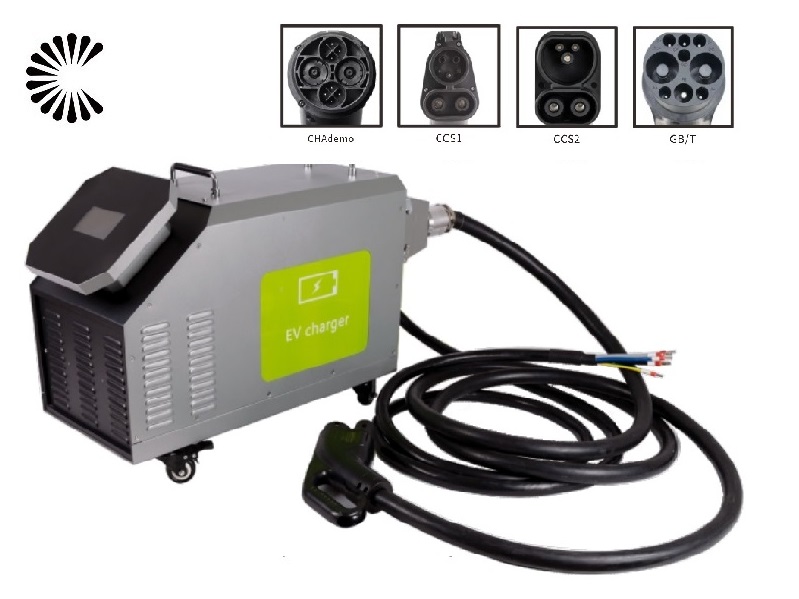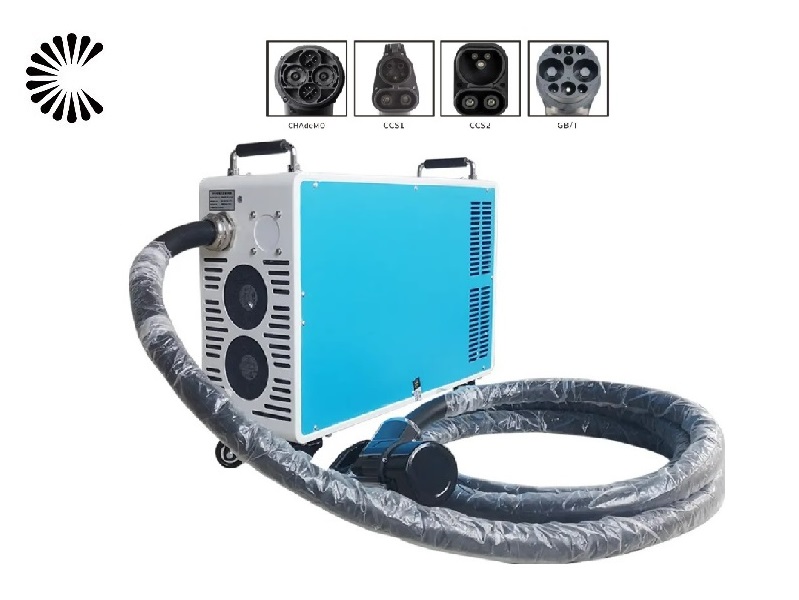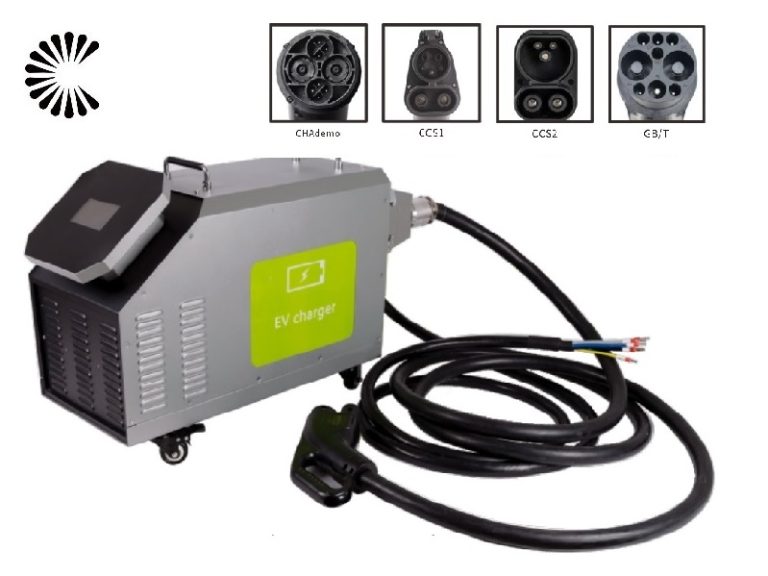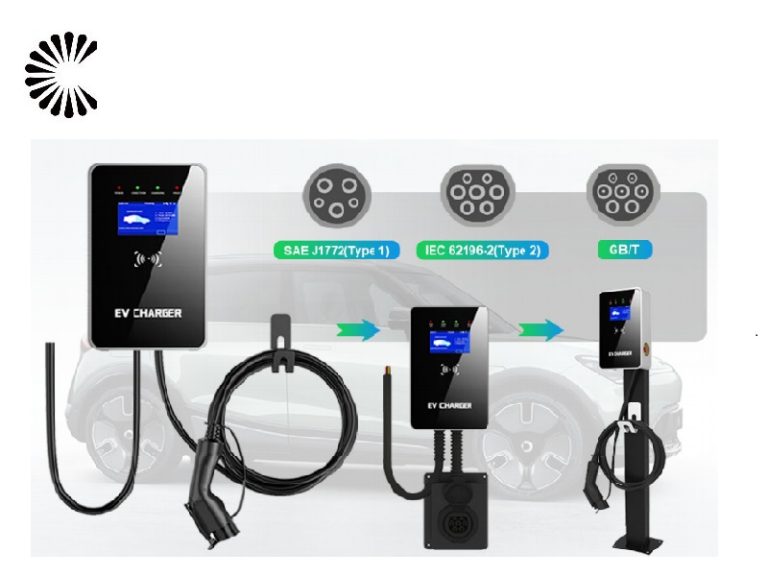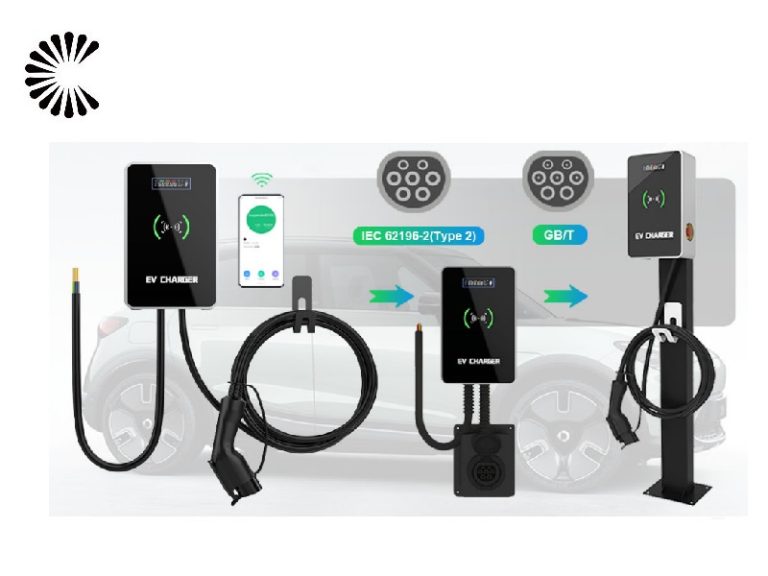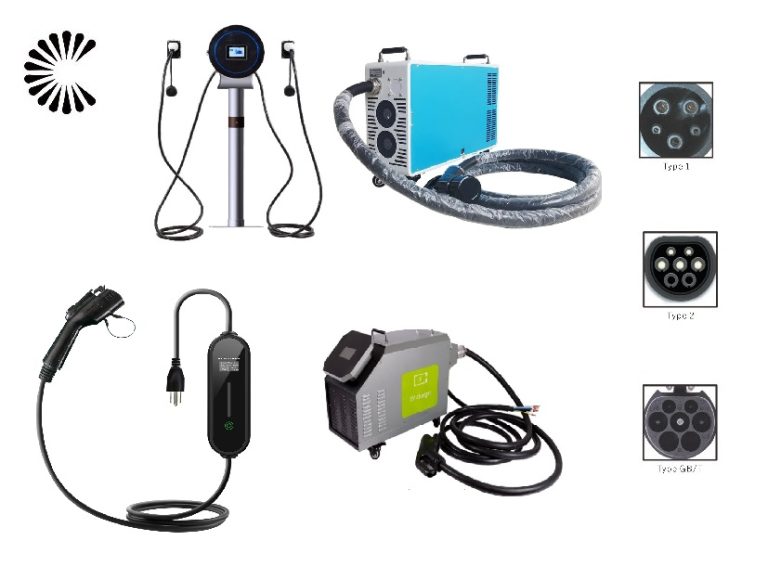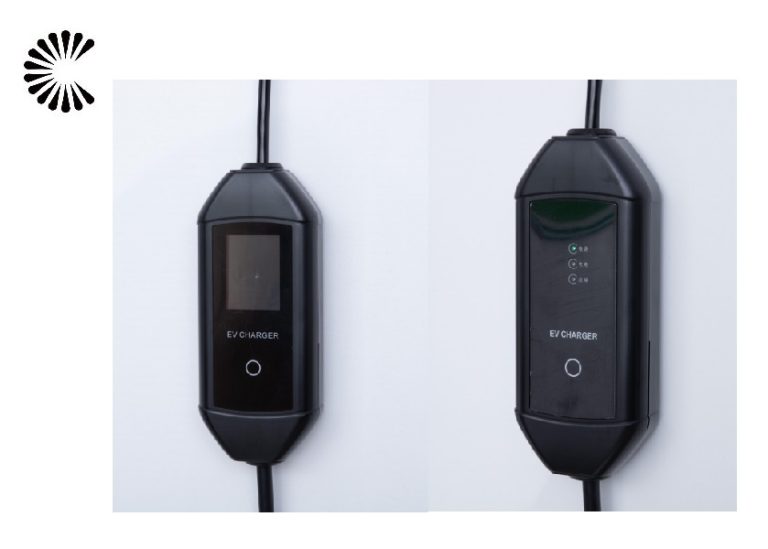Floor mounted ev charger DC 150KW AC 22KW CCS+CHAdeMO+Type 2
Floor mounted ev charger DC 150KW AC 22KW CCS+CHAdeMO+Type 2 is a model which is optional for 150kw and 22 kw. The in out voltage are for 380VAC.
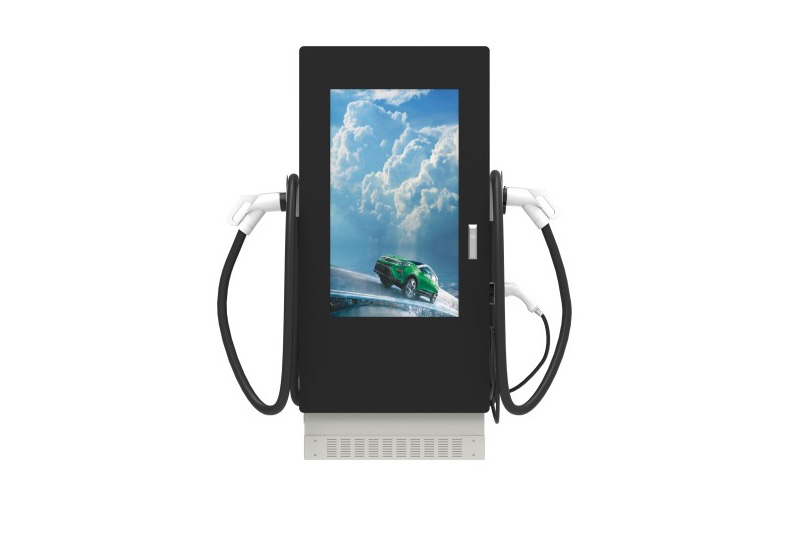
150KW DC 22KW AC EV Charger
Floor mounted ev charger Dimension:
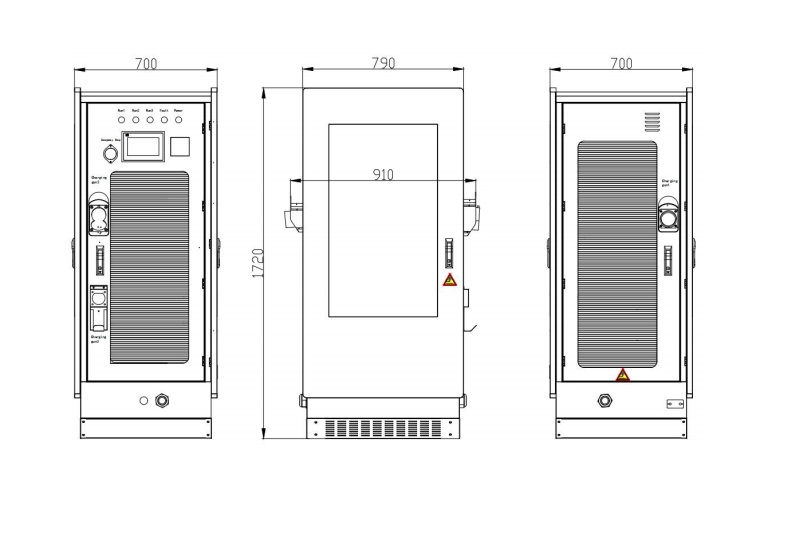
Parameters & Configurations:
General Requirements
| Type: | Floor-mounted | EV charger Type | CCS+CHAdeMO+Type 2 AC |
| Model No | HK-ENC-ADCL172C | Charger Capacity | 150KW DC + 22KW AC |
Input Requirements
| Energy Transfer mode | Conductive | AC Supply System | Three-Phase, 5 Wire AC system |
| Input frequency | 50Hz | Nominal Input voltage | 380VAC (+6% and -10%) |
Environmental Requirements
| Ambient Temperature Range | -20 to 55°C | Ambient Humidity | 5 to 95% |
| Storage temperature | -40 to 70°C | Environmental Condition | Environmental Condition |
Mechanical Requirements
| IP Ratings | IP 54 | Mechanical Stability | As per IEC 61851-1 Section 11.11.2 |
| Cooling | Forced air cooled to protect the equipment against temperature hazards | Mechanical Impact | Shall not be damaged by mechanical impact as defined in Section 11.11.2 of IEC 61851-1 |
Output Requirements
| Number of outputs | 3 | Type of each output | 1.CCS-2: Max. 150KW, 150-750VDC, 200Amp. 2. CHAdeMO: Max. 150KW, 150-750VDC, 200Amp. 3. IEC 6296-2 Type-2 EU, 380Vac, 32Amp |
| Output Current | DC: Max. 200Amp AC: Max. 32Amp | Output Connector Compatibility | CCS-2: IEC 61851-23/-24, IEC 62196-3 CHAdeMO: IEC 61851-23/-24, JEVS G 105, Rev. 1.2 compliant AC: IEC-61851-22, IEC 62196-2 Mode 3, Type 2 |
| Power Factor | ≥ 0.90 (Full load) | Converter Efficiency | >92% at nominal output power |
| Metering Information | Consumption Units | Cable Type | Supply cable will be with EVSE as per case C defined in section 6.3.1 of IEC61851-1 |
User Interface & Display Requirements
| ON- OFF (Start-Stop) switches | Touch Screen Enabled | Emergency stop switch | Mushroom headed Push button type (Red color) |
| Visual Indicators | Error indication, Presence of input supply indication, Charge process indication and other relevant information | User Authentication | Using mobile application or User interface (OCPP gives only a field mandate, media to be used is open) / QR Code/RFID Card /Password Login |
| Display & touch-screen size | 7 inch | Advertisement screen | 43 inch LCD screen |
Communication Requirements
| Communication between EVSE and Vehicle | As specified by CCS and CHAdeMO protocols | Communication between EVSE and Central Server | Open Charge Point Protocol (OCPP) 1.6 protocol |
| Metering | Grid responsive metering as per units’ consumption of each vehicle | Interface between charger and CMS | Ethernet and GPRS Modem |
Protection & Safety Requirements
| Safety Parameters | Over current, under voltage, Residual current, Surge protection, leakage protection, Short circuit, Over temperature, etc |
Product Overview
High-power power module platform of nuclear safety level is adopted, which has higher safety and reliability.
A new high-efficiency three-phase PFC circuit topology is adopted, and the power factor is greater than 0.99 and the harmonic distortion rate is lower than or equal to 5%. The full-bridge
phase-shifting soft-switching technology is adopted in the high-frequency switching power supply module, which has high execution efficiency.
Advanced digital current sharing technology effectively improves current sharing accuracy and
anti-interference ability, and pioneers module dormancy technology and rotation technology to
ensure efficient operation of the system.
Intelligent charging process control and perfect charging process monitoring and protection,
simple operation.
Various charging modes to choose, such as timing charging, quantitative charging, fixed amount charging and automatic charging.
Real-time display of charged quantity, charging time, current electricity price, charging price
and operation status.
It can reserve RS-485 networking communication interface and provide GPRS networking mode.
Module Hot Plug-in technology to make maintenance more convenient.
Working environment temperature from -20℃ to + 55℃.
Floor mounted ev charger function:
Electrical isolation between input and output of charger.
The output device prevents the battery pack from charging the output filter capacitor of the charger, and prevents the instantaneous high current from occurring at the output end of the charger when the battery pack is connected. The voltage withstanding grade, insulation grade and EMC of the charger meet the standards.
Floor mounted ev charger Application:
It is suitable for all kinds of parking lots in urban public charging stations (private cars, commuters, buses), urban residential districts, shopping plazas, power business places, etc. of city special charging stations (buses, taxis, public service vehicles, sanitation vehicles, logistics vehicles, etc.) It is especially suitable for fast charging situations such as charging
stations on intercity expressways where DC is needed, especially in the case of limited sites.
Here we list down some of application scenarios:
1. Business organizations: Supermarket, Shopping mall, Hotel, Restaurant, Pharmacy
2.Non-profit organizations: Airport, Railway / bus station, Exhibition, Museum, Hospital, School, Convention center, Lottery station, Government affairs center
3.Financial organizations: Bank, Insurance company, Foundation, Security company
4.Entertainments: Movie theater, Club, Bar, Salon, Gambling house
1) Power on for the charger, and then enter into the main interface, please choose the gun and entry method, as shown in Figure 6-2-1 and Figure 6-2-2.
2) When the user enters the charging system by password, choose the method to get the password.
After entering the password, input the verification code to enter the system settings interface.
As shown in Figures 6-2-3 and 6-2-4.
3) When the user enters the charging system by swiping card, it shows in Figures 6-2-5.
4) If the card is swiped or QR code is scanned successfully, user enters the charging function
selection interface. In this interface, there are four charging modes: 1) automatic charging,
2) charging according to the amount of money, 3) charging according to the amount of electricity,
and 4) charging according to the time. As shown in Figure 6-2-6.
5) Select the charging mode to enter the charging parameter settings of charging
amount/quantity/time/, as shown in Figures 6-2-7, 6-2-8, 6-2-9
6) After choosing the charging mode, click the confirmation button and enter the card swiping
interface again. After swiping, the card can start charging (note: the card will be locked after
swiping, and must be unlocked again after charging, otherwise the card can not be charged again).
7) After starting, it enters the charge monitoring interface. The charging monitoring interface
will display various battery information and the information output by the charger. The charging
can be stopped manually after user points stop. As shown in Figure 6-2-11, Figure 6-2-12 and Figure
6-2-13.
8) When pointed stop or the charging is completed, it enters the settlement interface. It shows
in Figure 6-2-14



In the course of transportation, the charger should be packed firmly and intact in a solid wooden packing box, and the direction of loading and unloading should be marked.
The charger should not be stored and transported upside down. In the course of transportation, corresponding tightening measures should be taken to avoid strong
vibration and bump damage to the outer packaging of equipment. After arrival of the goods, user should check whether there is any damage. If there is any transport damage,
user should consult with the transport party or our company to solve it. Check whether the contents in the box are in conformity with the packing list immediately after
opening the box.
The packaged equipment should be stored in the room where the relative humidity is less than 80% and the ambient air temperature is -20℃ to +55℃. Storage places should
be dry, clean and airy, and can prevent the invasion of harmful gases. It is strictly forbidden to store corrosive articles in the same place.
Note: It is strictly forbidden for non-professionals to disassemble equipment components.

Our Factory have certifications such as CE ISO Certifications. TUV /UL /CE Certificated for Overseas on cable and wire.
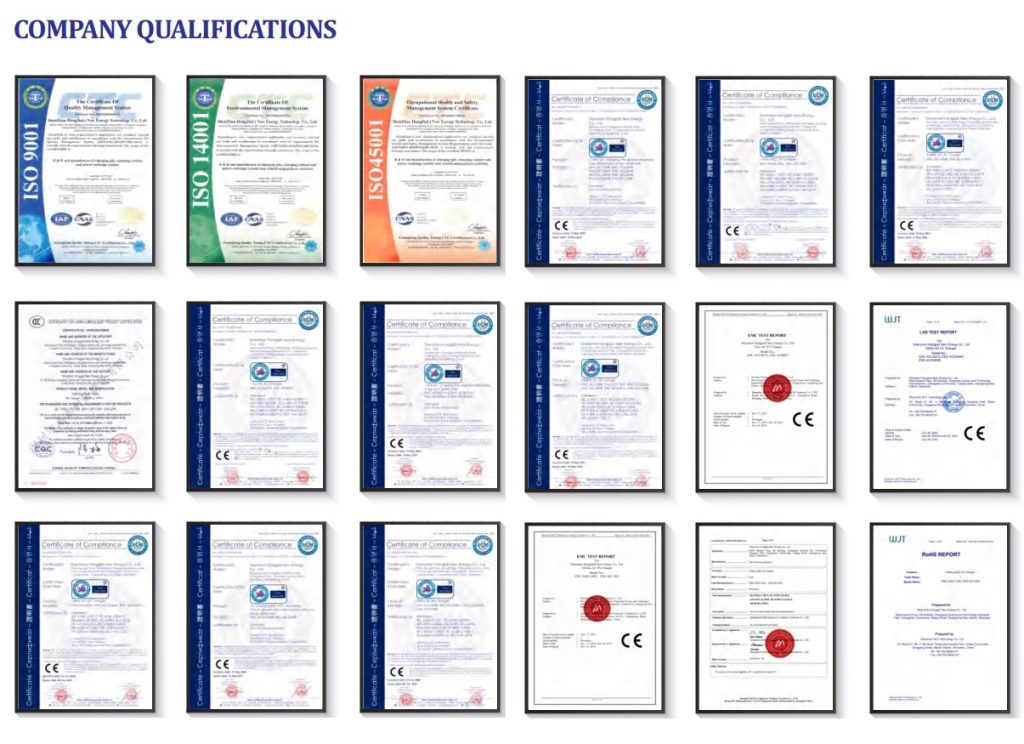
- Charger body is easy to be fixed with anchor bolts to prevent it from inclining
and dithering due to external and human factors. - Shading and rainproof measures should be taken for chargers. It is suggested
to install shelters outdoors. - Check regularly whether all bolts in chargers are tightened, whether the connecting wires are loosened or not, or the connection is not firm, etc.
- Check for short circuit.
- Check whether the emergency stop button is available.
- Attention should be paid to lightning protection to ensure effective shielding
and reliable grounding of chargers. - When in use, the output voltage and current of the charger should be controlled within the nominal range to ensure that the charger works in the state of maximum efficiency.
- When the charger stops using, the charging output should be stopped first, then the cable should be wrapped and put back in place.
Note: During the transportation, the chargers should be packed firmly and the
direction of loading and unloading should be marked. It is forbidden to store and
transport chargers upside down. Corresponding tightening measures should be taken
to avoid strong vibration and turbulence damage to the outer packaging of equipment.
- Decades of Experiences: As a Chinese academy of sciences park high-tech enterprise and manufactory, our factory establised since 2002, with over 10 years factory development, our factory became famous brand in China. We believe new energy is the future, better to environment and more economical to our life. We are an integrated hi -tech electronic company. “Passion, Honesty, Sound service, Keen cooperation and Development” are our goals. We are here expecting friends all over the world!
- Various Charging Products: Full range of charging products as well as charger accessories. Provide full support to customer after-sale services. Most of the model of produts are able to be customized.
- For all the products that we shipped have 1 year warranty period as well as life time spare parts and accessories with competitive price .
- Accept customized OEM ODM products.
- Experienced foreign trade team to handle the shipment and after-sale services.
- Efficient and fast supply chain.

Floor Mounted EV Charger:
First, the characteristics of the parking lot Floor Mounted EV Charger:
Parking Floor Mounted EV Charger, as the name shows, it is refers to the charging equipment installed on the ground of the parking lot. Compared with the traditional wall-mounted charging pile, it has the following significant advantages:
- 1, strong stability: the Floor Mounted EV Charger uses a stable base design, can withstand the impact of large wind and earthquake and other natural disasters, to ensure the safe and stable operation of the equipment;
- 2, flexible layout: Because it is installed on the ground, the Floor Mounted EV Charger can be flexibly configured according to the actual needs and spatial layout of the parking lot to meet the charging needs of different models;
- 3, easy maintenance: the maintenance operation of the floor charging pile is relatively simple, and the staff can easily inspect, repair and replace parts, this helps us in reducing maintenance costs.
Second, the advantages of the parking lot Floor Mounted EV Charger:
The parking lot Floor Mounted EV Charger has shown many advantages in practical applications, making it the preferred solution in the field of electric vehicle charging:
- 1, high charging efficiency: the Floor Mounted EV Charger usually uses high-power charging technology, which can quickly supplement the electricity for electric vehicles, shorten the charging time, and improve the charging efficiency;
- 2, easy to use: users only need to park the electric vehicle near the charging pile, and can start charging through simple operation, without looking for a wall-mounted charging pile or worrying about the lack of charging line length;
- 3, high safety: The design of the Floor Mounted EV Charger pays attention to safety performance, equipped with over current, over voltage, over temperature and other multiple protection mechanisms to ensure the safe and reliable charging process.
Wall Box Ev Charger:
Firstly, Wall Box Ev Charger is a kind of outdoor steel frame mounted on the wall of the charging pile. It is a charging equipment commonly used in commercial, residential areas and other places. In contrast, the Floor Mounted EV Charger is installed on the ground, because of its stable structure.
Second, Charging speed is one of the most concerned issues when consumers choose charging piles. The charging speed of the wall hanging charging pile and the column charging pile is different. In general, the charging speed of Floor Mounted EV Charger is faster than that of the Wall Box Ev Charger, because the Floor Mounted EV Charger can install more charging pipes, and also has stronger power support.
Third, Charging power is another key factor of the charging pile and is often used to measure the capacity of the charging pile. The charging power of the Floor Mounted EV Charger is often higher than that of the Wall Box Ev Charger, and they can provide greater current and higher input voltage to achieve faster charging speed, which can meet the charging demand of high power of electric vehicles in a short time.
Wall Box Ev Charger is usually suitable for commercial places, such as shopping centers, office buildings, hotels and so on. Although they can be installed in places such as residential complexes, because they only provide a small number of charging outlets, they are not suitable for high-density charging needs. The Floor Mounted EV Charger is suitable for a wider range of occasions, including residential areas, transportation stations, parking lots and other public places.
Input & Output Voltage 220V EV Charger:
Best 240V EV Charger for sale:
best 16a level 1/2 ev charger:
Here are our 4 favorite 16 Amp EV Chargers that can be plugged into a 16 Amp circuit and will deliver enough power to charge most vehicles overnight.
Two Types of Portable EV Charger:
There are two types of Portable EV Charger: with battery or with out battery. The difference between this two types is there are battery for storage the electricity or not. With battery EV Charger are used in emergency rescue, because with battery, the weight of the charger is higher than another type. Usually need to carry it with car. While without battery EV charger need to connect with electricity when in charging.

Level 1 EV Charger
Portable EV Charger Type 2
Mobile EV charger for roadside use
Portable EV charger solar
Portable EV charger solar is avialble with solar energy.


